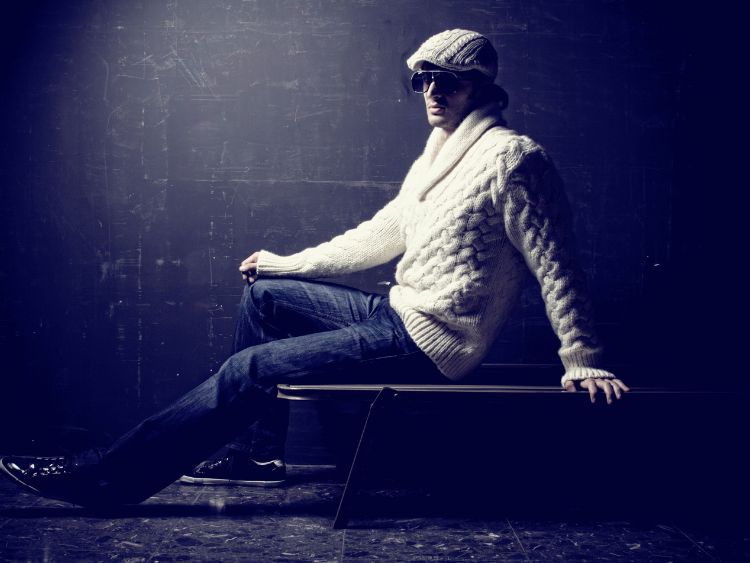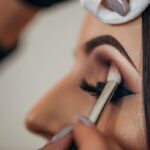The 1950s were an iconic period in fashion history, known for its elegance, innovation, and a touch of rebellion. Post-war optimism spurred creativity, and fashion evolved into a tool for self-expression, particularly for women. From the introduction of new fabrics to the rise of ready-to-wear, this decade set the foundation for many styles we see today. Let’s take a deeper dive into the unforgettable world of 1950s fashion.
The Return of Glamour
The 1950s marked a transition from the austerity of the war years to a renewed focus on elegance and luxury. With the rise of consumerism, people now had access to a variety of clothing styles, fabrics, and designs that reflected their desire for sophistication. Fashion houses like Dior, Balenciaga, and Chanel dominated the scene, setting trends that are still referenced today. But it wasn’t just about high fashion—this era was also pivotal for the everyday person, as off-the-rack clothing became accessible and popular.
The Rise of Feminine Silhouettes
One of the most recognizable aspects of 1950s fashion is the emphasis on femininity. Women’s clothing during this period was all about enhancing natural curves and celebrating the female form. The hourglass silhouette became the ideal, with cinched waists, full skirts, and soft shoulders.
- The Dior “New Look”: Christian Dior’s 1947 “New Look” set the tone for the decade, with its cinched waist and voluminous skirt. This style dominated the early 1950s and was characterized by its luxurious fabrics and emphasis on femininity.
- Pencil Skirts and Sweater Sets: For a more casual look, women turned to pencil skirts and fitted sweaters, which provided a sleeker, more understated version of the hourglass shape. Pairing these outfits with gloves and pearls added a touch of elegance.
The emphasis on polished, put-together looks was strong. Women didn’t just dress up for special occasions—they embraced glamour in their everyday lives.
Fabrics and Colors of the 1950s
Another exciting shift in 1950s fashion was the introduction of new materials and a wider color palette. Advances in textile technology meant fabrics like nylon, rayon, and polyester became more prevalent. These fabrics were lighter, more affordable, and easier to care for, making them an instant hit.
- Bold Prints and Pastels: Floral patterns, polka dots, and checks became trendy for dresses, while pastel colors were favored for skirts and blouses. Bright colors were also popular, especially for casual summer wear.
- Luxury Materials: For evening wear, fabrics like silk, taffeta, and satin were still the go-to choices, reinforcing the glamorous vibe of the decade.
1950s Fashion Icons
Fashion in the 1950s wasn’t just influenced by designers. Hollywood played a significant role in shaping trends. Stars like Audrey Hepburn, Marilyn Monroe, and Grace Kelly became style icons whose looks were emulated by women everywhere.
- Audrey Hepburn: Known for her timeless elegance, Hepburn popularized the little black dress, ballet flats, and simple silhouettes that emphasized grace over flash.
- Marilyn Monroe: The ultimate bombshell, Monroe’s glamorous, figure-hugging dresses became synonymous with femininity and sex appeal.
- Grace Kelly: A symbol of understated elegance, Kelly favored more modest, tailored clothing that still exuded sophistication.
Men’s Fashion in the 1950s
Though women’s fashion often takes center stage in discussions about the 1950s, men’s style was equally noteworthy. Men’s fashion became more relaxed compared to previous decades, with a shift toward casual styles while maintaining a polished appearance.
- The Rise of the “Teddy Boy”: This British subculture was characterized by drape jackets, narrow trousers, and slicked-back hair. It became an iconic look for rebellious youths.
- Ivy League Style: Button-down shirts, chinos, and loafers were staples of the preppy, Ivy League look that became popular among young men, offering a contrast to the more formal suits of earlier decades.
- Casualwear: Hawaiian shirts, jeans, and leather jackets also became popular, particularly among the younger crowd. Iconic figures like James Dean embodied the “rebel without a cause” aesthetic, which influenced casual menswear for years to come.
Footwear and Accessories
Accessories played a crucial role in completing the perfect 1950s outfit. Shoes, handbags, hats, and gloves were all essential elements of a well-rounded wardrobe.
- High Heels: Stiletto heels became the footwear of choice for women, adding height and elegance to their outfits. These heels were often worn with pencil skirts or glamorous evening gowns.
- Handbags and Gloves: Women rarely left the house without a matching handbag and gloves. Structured, boxy handbags were fashionable, while gloves added a touch of refinement.
- Hats: Hats were another must-have accessory. Women wore everything from pillbox hats to wide-brimmed sunhats, while men opted for fedoras or flat caps, depending on the occasion.
The Shift to Casualwear
Although formalwear remained important, the 1950s also saw the rise of casual fashion. The increasing popularity of television and a more relaxed lifestyle led to an increase in casual clothing options.
- Jeans and T-shirts: Jeans, which were previously worn mainly by laborers, became a staple of teenage fashion. Paired with a white t-shirt, this look was immortalized by figures like James Dean and Elvis Presley.
- Sportswear: Sweaters, cardigans, and casual button-downs became common, especially for men. For women, casual wear often included pedal pushers or capri pants paired with simple blouses or knit tops.
FAQs about 1950s Fashion
What was the most iconic fashion trend of the 1950s?
The most iconic trend of the 1950s was the hourglass silhouette, made popular by Dior’s “New Look,” which emphasized a cinched waist and full skirts.
Who were the biggest fashion icons of the 1950s?
Audrey Hepburn, Marilyn Monroe, and Grace Kelly were among the biggest fashion icons of the 1950s, influencing trends both on and off the screen.
Why were gloves so popular in the 1950s?
Gloves were a symbol of elegance and refinement. Wearing gloves was considered part of being well-dressed, and they were often worn to complete an outfit, especially for formal occasions.
What fabrics were popular in the 1950s?
Nylon, rayon, and polyester became popular for everyday wear, while luxurious fabrics like silk and satin were still favored for evening gowns.
How did men’s fashion evolve in the 1950s?
Men’s fashion in the 1950s became more casual, with the rise of jeans, t-shirts, and sportswear, alongside the Ivy League look and the rebellious Teddy Boy style.
Conclusion: A Legacy That Lives On
The fashion of the 1950s is remembered for its elegance, femininity, and iconic silhouettes. While the styles of that era may have evolved, the influence of 1950s fashion is still felt today. Whether it’s the timeless little black dress, high-waisted jeans, or the rise of casual chic, many elements from this decade remain staples in modern wardrobes. It was a decade that shaped how we approach fashion, blending glamour with everyday practicality.







